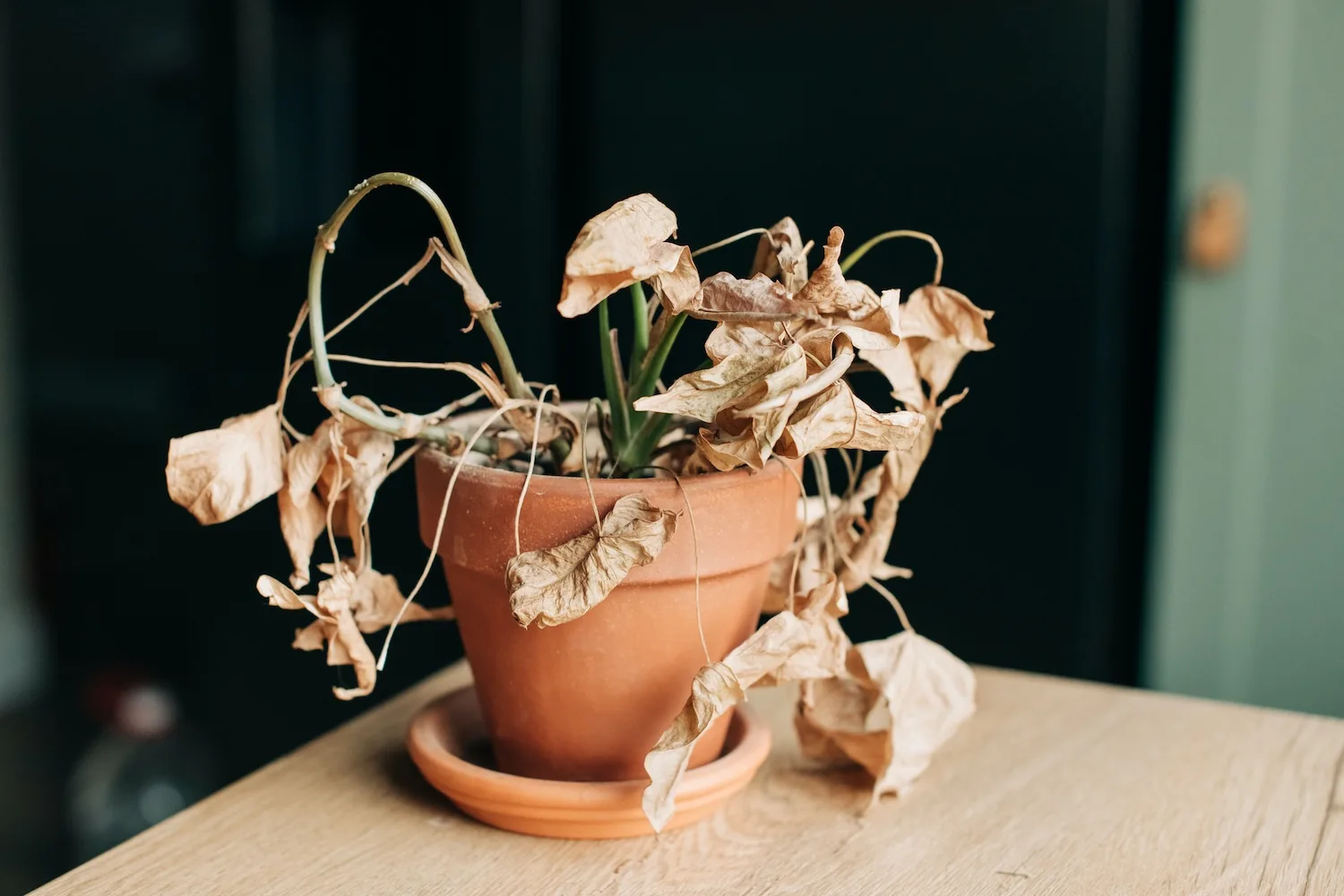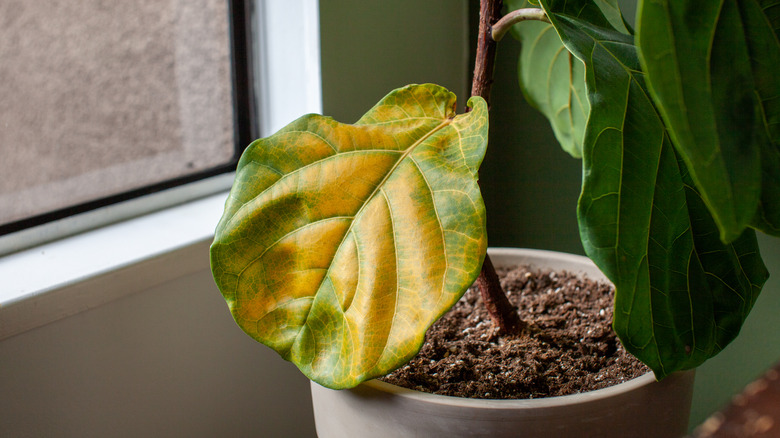The Hidden Reason Behind Dying Houseplants
If you’ve ever looked at a yellowing leaf and wondered, “Why is my plant dying slowly?” you’re not alone. At DH Garden Centre here in Kitsilano, Vancouver, we meet so many plant lovers who bring in drooping, sad-looking houseplants and feel convinced they’ve failed. But you know what we often discover?
It’s not about how much love or attention you’ve given your plant. It’s not even about forgetting to water one weekend.
More often than not, the real reason a healthy plant starts to die slowly is… the pot.
Yep, that beautiful, decorative pot you picked to match your décor? If it’s the wrong type, with poor pot drainage, improper pot material, or incorrect pot size, it can quietly kill your plant over weeks or even months.
Let’s break down exactly how pots can make or break your indoor plant care game and what to do instead.

If it’s the wrong type, with poor pot drainage, improper pot material, or incorrect pot size, it can quietly kill your plant over weeks or even months.
Why Pot Drainage Matters More Than You Think
When we talk about “pot drainage,” most people think it’s just a little detail — one hole in the bottom. How big a difference can that make?
Actually… it’s everything.
Plants don’t just absorb water through their roots. They also need air — specifically oxygen. And that only happens when water flows through the soil and out the bottom, pulling fresh air in with it.
Without proper pot drainage, water pools at the bottom of the pot.
Roots stay soggy, oxygen disappears, and fungal diseases (and rot) start creeping in.
The signs of poor drainage aren’t always obvious at first:
-
Yellowing leaves
-
Mushy stems
-
Fungus gnats buzzing around
-
A plant that just… doesn’t grow
It’s not dramatic. It’s a slow decline. But once root rot sets in, it can be hard to reverse.

Without proper pot drainage, water pools at the bottom of the pot.
How to Fix It:
Option 1: Double-potting (The DH Garden Centre Favorite!)
-
Keep your plant in its nursery pot (those plastic ones with drainage holes).
-
Place the whole pot inside a prettier decorative pot.
-
Water it, let it drain completely, then place it back in.
Option 2: Create a drainage layer
-
If your decorative pot has no hole, add a layer of lava rock or LECA to create a reservoir. It’s not perfect, but it helps.
Option 3: Drill a drainage hole
-
Only for those who are handy and have the tools. (We do this at DH Landscape Solution all the time — just ask!)
Before buying any pot, ask yourself: Where will the water go? If you can’t answer that, neither can your plant — and that’s a problem.

Double-potting (The DH Garden Centre Favorite!)
Choosing the Right Pot Size: Why Bigger Isn’t Better
Here’s a common mistake I see all the time:
A well-meaning plant parent wants to give their plant “room to grow,” so they repot into a huge pot… and then watch it die.
Why? Because when a pot is much bigger than the plant’s root system, the extra soil stays wet — for too long.
Too much space = too much water = soggy roots = rot.
Conversely, a pot that’s too small can lead to:
-
Rootbound plants (circling, strangling roots)
-
Soil that dries out too quickly
-
Stunted growth
The Sweet Spot:
When repotting, choose a pot that’s about 1–2 inches wider in diameter than the current one. For example:
-
4-inch pot → 5–6 inch pot
-
6-inch pot → 7–8 inch pot
Don’t double the size unless you’re transplanting something truly root-packed.

When repotting, choose a pot that’s about 1–2 inches wider in diameter than the current one.
Also, don’t forget depth.
Some plants (like snake plants or succulents) prefer shallow pots. Others (like peace lilies or ZZ plants) want more vertical root space.
Getting pot size right supports better root development, more efficient watering, and happier houseplants overall.
Pot Material Makes a Big Difference – Here’s Why
Another crucial but often ignored part of indoor plant care is the pot material. It doesn’t just influence the look — it controls how your soil behaves and how healthy your roots stay.
Let’s go through the pros and cons of the most common pot materials:
Terracotta / Clay
-
Breathable — allows airflow through the sides
-
Absorbs moisture → dries soil faster
-
Best for: succulents, cacti, or overwaterers
-
⚠️ Downside: Can dry out too fast, especially in warm or dry homes

Another crucial but often ignored part of indoor plant care is the pot material.
Glazed Ceramic
-
Holds moisture longer
-
Beautiful designs for every interior
-
Best for: tropical plants that like consistent moisture (e.g., calatheas, peace lilies)
-
⚠️ Heavy and fragile — can crack if dropped
Plastic Pots
-
Lightweight, affordable, retain moisture well
-
Often come with good drainage
-
Best for: beginners, busy gardeners, or plants you move around often
-
⚠️ May not be the most stylish
Concrete or Stone
-
Stylish, sturdy, and perfect for modern aesthetics
-
Absorbs and retains heat — may stress plants in summer
-
Best for: large indoor trees or outdoor plants
-
⚠️ Very heavy; not easy to move
Woven Baskets
-
Popular in boho-style homes
-
Should always be used as a decorative outer layer, not for direct planting
-
Best for: hiding nursery pots
Tip from Darrell: Match the pot material to both your plant’s needs and your watering habits. If you water frequently, go with terracotta. If you tend to forget, try ceramic or plastic.
Real Customer Story: The Pot That Nearly Killed a Monstera
A few months ago, a lovely woman named Lianne came into DH Garden Centre with a sad-looking monstera. It had yellowing leaves and soft stems — classic signs of overwatering. But here’s the twist:
Lianne only watered it once a week — sometimes less.
So what happened?
She had repotted her monstera into a deep, heavy, glazed ceramic pot with no drainage hole. It looked stunning in her living room… but was silently drowning the plant. All the excess water stayed trapped at the bottom, and over time, root rot took hold.
We walked her through the double-potting method, repotted her plant, trimmed off the damaged roots, and sent her home with care instructions.
Three weeks later? New growth. Glossy leaves. No more gnats.
She sent us a thank-you photo. That’s why we do what we do.
Final Checklist: What to Look for in the Perfect Pot
Before you click “buy” or grab that trendy pot from the shelf, use this checklist:
✅ Does it have drainage holes?
(If not, will you use double-potting or add a drainage layer?)
✅ Is the pot size appropriate?
(Just 1–2 inches wider than the current one.)
✅ Is the material right for your plant’s needs?
(Think: how fast do you want the soil to dry? How heavy is too heavy?)
✅ Do you like the look?
Because yes — style still matters!
Conclusion: When in Doubt, Ask Us!
At DH Garden Centre in Vancouver, we see this all the time: good people, with good hearts, unknowingly hurting their plants with poor pot choices. But now that you understand the role of pot drainage, pot material, and pot size in indoor plant care, you’ve got the power to turn things around.
The pot you choose is not just a decoration — it’s a life-support system.
So next time you go pot shopping, remember:
Pick a pot that doesn’t just match your shelf — it needs to match your plant.
Need help choosing the right pot?
Bring your plant into DH Garden Centre at 3742 West 10th Avenue, Vancouver — or send us a photo! Our friendly team is here to help you find the perfect pot for a happy, thriving plant.
Let’s grow something beautiful together 🌿
📍 Visit us: DH Garden Centre, 3742 West 10th Avenue, Vancouver, BC
🛒 Shop online: dhgardencentre.com
📸 Follow us for more plant tips:
Instagram: @dh.garden.centre
Facebook: dh.garden.centre160

